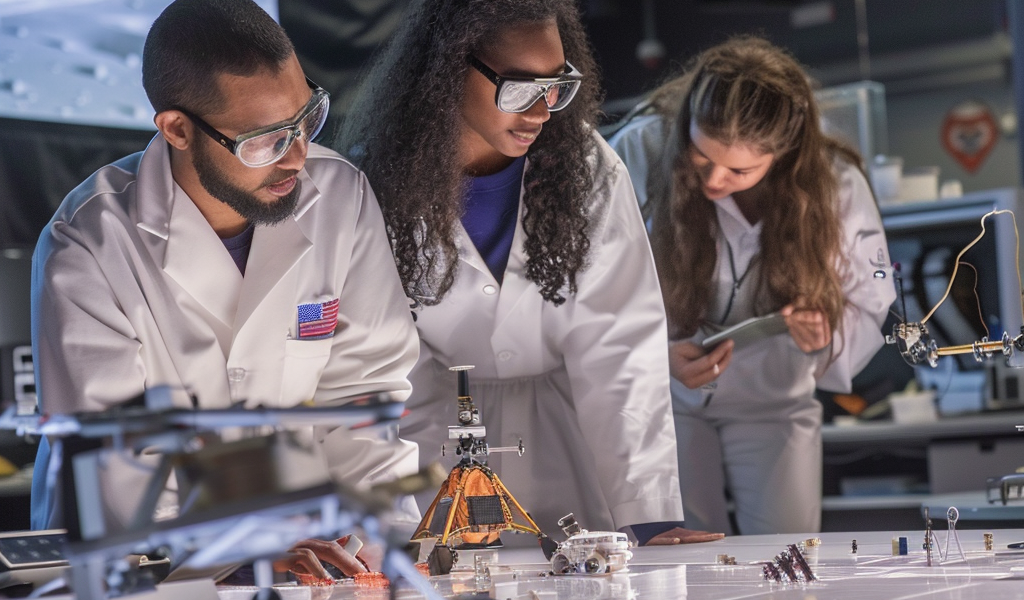NASA Awards $1.5 Million in Watts on the Moon Challenge for Innovative Energy Solutions
Nasa’s Watts on the Moon Challenge concluded with a significant milestone in energy innovation as two U.S. teams were awarded a total of $1.5 million for their groundbreaking technologies aimed at enhancing energy distribution, management, and storage for lunar missions. This initiative aligns with NASA’s Artemis program, which is focused on establishing a sustainable human presence on the moon.
The challenge, which unfolded in two phases, invited innovators to devise advanced power transmission and energy storage technologies capable of supporting long-duration missions to the moon. The final phase culminated in a technology showcase and winners’ announcement held at the Great Lakes Science Center, which serves as the visitor center for NASA’s Glenn Research Center in Cleveland.
Kim Krome-Sieja, acting program manager for NASA Centennial Challenges at the Marshall Space Flight Center in Huntsville, Alabama, expressed her enthusiasm for the finalists’ contributions. “Congratulations to the finalist teams for developing impactful power solutions in support of NASA’s goal to sustain human presence on the moon,” she stated. “These technologies seek to improve our ability to explore and make discoveries in space and could have implications for improving power systems on Earth.”
The grand prize of $1 million was awarded to Team H.E.L.P.S. (High Efficiency Long-Range Power Solution) from the University of California, Santa Barbara. Their innovative approach stood out among the competition, showcasing the potential for efficient energy solutions in challenging environments.
In addition to the grand prize, the second prize of $500,000 went to the Orbital Mining Corporation based in Golden, Colorado. Both teams were among four finalists invited to refine their hardware and deliver complete system prototypes for evaluation during this final stage of the competition.
The finalists’ technologies were the first power transmission and energy storage prototypes to undergo testing in a vacuum chamber designed to replicate the extreme conditions of the lunar environment, particularly the permanently shadowed regions of the Lunar South Pole. This rigorous simulation required the teams’ power systems to demonstrate functionality over a cycle of six hours of solar daylight followed by 18 hours of darkness, with the user positioned three kilometers (nearly two miles) away from the power source.
During the competition, judges evaluated the finalists’ solutions using a Total Effective System Mass (TESM) calculation. This metric assesses the effectiveness of the system in relation to its size and weight, as well as the total energy output from the power source. The top-performing solution was determined based on its ability to maximize energy efficiency while minimizing mass.
The Watts on the Moon Challenge is a testament to NASA’s commitment to fostering innovation in space exploration technologies. By encouraging the development of advanced energy solutions, NASA aims to not only support its lunar missions but also to pave the way for future advancements in energy systems that could benefit life on Earth.
The competition has attracted a diverse range of participants, showcasing the ingenuity and creativity of U.S. innovators. As NASA continues to push the boundaries of space exploration, initiatives like the Watts on the Moon Challenge play a crucial role in identifying and nurturing the technologies that will enable sustained human activity on the moon and beyond.
The successful completion of the challenge underscores the importance of collaboration between academia, industry, and government agencies in addressing the complex challenges of space exploration. As technology continues to evolve, the potential applications of these innovations extend far beyond the lunar surface, offering solutions that could enhance energy efficiency and sustainability on Earth.
As the space community looks ahead to future missions, the contributions of the teams involved in the Watts on the Moon Challenge will undoubtedly influence the trajectory of lunar exploration and the broader field of energy technology.





